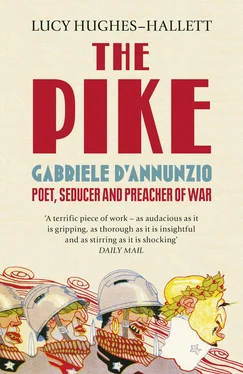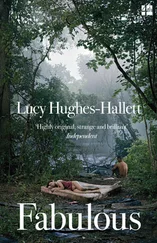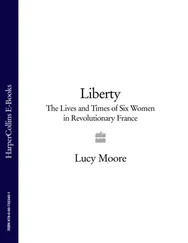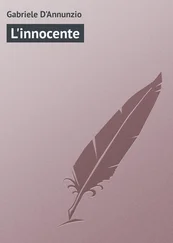Gabriele’s education was begun by a pair of devout, unmarried sisters whom he was to cruelly traduce in a story of disease and sexual desperation – The Book of the Virgins (later reworked as The Virgin Orsola). The passage in which he describes the two women’s lessons in reading, writing and religion sounds like actual experience recalled. ‘In solemn voices they spoke of sin, of the horrors of sin, of everlasting punishment, while all those wide eyes filled with amazement and all those small pink mouths opened aghast. In the vivid imaginings of the children, objects came alive … the Nazarene, bound with thorns and bloody drops, gazed from every side with agonised, haunting eyes, and beneath the great hood of the chimney each plume of smoke took on an atrocious form.’ Other children elsewhere might be terrified by the scissors man, the big bad wolf, or the fierce bad rabbit, but for d’Annunzio and his fellows, the bogeyman was one and the same with the deity.
Luisa was socially a cut above her husband. She would take her son to stay with her parents down the coast in Ortona. Their house, a rambling old structure wedged between the monastery and the fortress, was a complex of massive walls and hidden courtyards, of long corridors and cell-like rooms. As a tiny crawling child, d’Annunzio was fascinated by the floor tiles with their depictions of flowers and animals. Once upright and talking he would demand accounts of the fables illustrated on the ceramic panels let into the whitewashed walls.
The most wonderful part of his sojourns in Ortona were his visits to another relative, an abbess. She fed him with little twisted biscuits called ‘vipers’. When she told him she would teach him ‘glorious mysteries’ and gave him an amethyst rosary to hold, Gabriele, who was to become an insatiable collector of holy trinkets, and an inventive stager of pseudo-religious ceremonies, began to hyperventilate with excitement. Even more thrilling, she allowed him, as a favoured nephew, to pass through the visitors’ parlour into the convent. There in the secrecy of her cell, he watched her practising ‘her arts of divination’. He was nine years old, a boy in a place no male should ever have been permitted to enter, assisting at rituals forbidden by the Church. In a confused but ecstatic awareness of the multiple transgression, he watched while she threw aromatic herbs on the fire and peered at the homely ingredients of her spell, ‘the innards of a mullet, iridescent fish scales, sage leaves’. For all her neat wimple and nun’s bands, the old lady was a sorceress. He was afraid of her. She took his hands, and explained that his past and future were written on their two palms as a sacred story might be painted on a diptych. The room was full of smoke. Kneeling, arms outstretched, the sleeves of her habit hanging like sails, the Abbess seemed to go into a trance. Gabriele panicked. Beating frantically at the door he yelled until a novice appeared and released him.
Sorcery and divination had penetrated the convent walls. Outside they were ubiquitous. The people of the Abruzzi might be church-goers and observers of fasts and festivals, but Christianity coexisted in their culture with heathen magic. D’Annunzio witnessed cacophonous ceremonies when the frenzy of the ‘possessed’ was aggravated by a din of yells and whistles. In one of his stories a woman of Pescara seeks out a witch doctor, a bearded old man who rides into town on a white mule, wearing gold triangles in his ears and with silver buttons as big as the bowls of spoons on his coat. He is said to be able to make the blind see, and calm those possessed by wicked spirits. His wife, with whom he lives in a cave outside town, is an abortionist. In other stories d’Annunzio writes about an unsuccessful fisherman who believes himself to be cursed, about a dead dog, putrid and stinking, left across the door of a hut at night to keep away vampires, about a child dying as its mother declares it has been bewitched. Some of these magical practices he filched for his fiction from his friend, the folklorist de Nino. Others he observed as a child.
The Abruzzi is sheep country. Green roads, like rivers of grass, lead from the high mountain pastures down the long, long incline to the sea. D’Annunzio’s poem about the shepherds, who would bring their flocks down them annually ‘in the footsteps of ancient fathers’, was written long after he had ceased to return home with any regularity, but when he was a child their transhumance would have been one of the great public events of the year, marking the season as clearly as the harvest or the ripening of the first cherries. Those shepherds, and the peasants who farmed the coastal plain, preserved intact a rich cache of beliefs and ceremonies. D’Annunzio describes the endlessly repetitive, mournful chant which accompanied every solemnity from birth to death: the travelling songs sung in parts by groups of men and women on the road together ‘like a wave continually rising and falling’. He records a ritual which is still extant in the villages of the Abruzzi. ‘A white ox, fattened by a year of abundant grazing, caparisoned in vermilion, ridden by a little boy, processes in pomp to the church between banners and candles … arriving in the centre of the nave, it lets fall its droppings; in the heap of steaming matter the devout read the agricultural auspices.’
D’Annunzio described the elaborate praise-singing that was customary at harvest time. Lines of women, laden with food and wine in tall, painted jars, would process out into the fields, lauding the sun and the landowner and God as they went. When the men heard them coming they would lay down their scythes, and the foreman led the prayer – ‘inflamed with enthusiasm, he expressed himself spontaneously in couplets’ (this improvised rhyming is well documented) – and the rest of the gang roared out their responses ‘while the red light of sunset flashed reflected off the iron blades, and the topmost sheaf on the corn stook glittered like a flame’.
The child saw, and the man remembered, how a group of people could be bound together and excited by the power of the word.
D’Annunzio felt the lure of Christian devotion. During his recurring bouts of depression he would crave the peace of religious seclusion. So too he had his private rituals and a predilection for magical thinking. At birth he narrowly escaped being choked by the caul. Those so born were believed to have the second sight, and the caul itself was a charm which could save its wearer from drowning. D’Annunzio’s was preserved in a little package of silk hung on a cord which, as a child, he wore always around his neck. Recalling this as an adult, he wrote patronisingly about the ‘superstition’ of the women – his mother, aunts and nurse – who believed in its efficacy, but, throughout the Great War, whenever he went into action, he carried an amulet or two in his pocket.
He was always a ditherer. Frequently, when faced with a decision, he resorted to primitive forms of divination. He opened books at random and searched for messages in the first phrase he read (a practice he claimed to have taken from ‘the ancient priests of Cybele’). He looked for omens. Emeralds brought good fortune (both magically and – as it happens – practically: Eleonora Duse gave him two enormous emeralds, the pawning of which several times saved him from financial disaster). He visited clairvoyants, he consulted astrologers. He carried a pair of ivory dice in a little jewelled box with the Caesarean inscription ‘Alea jactae sunt’ (‘the dice have been cast’) and, when required to make a decision, would frequently allow the fall of the dice to make it for him. He abhorred the primitive religiosity of the peasants he knew as a child, but he took with him into his sophisticated adulthood many of the superstitions of the village society he had left behind.
Читать дальше












